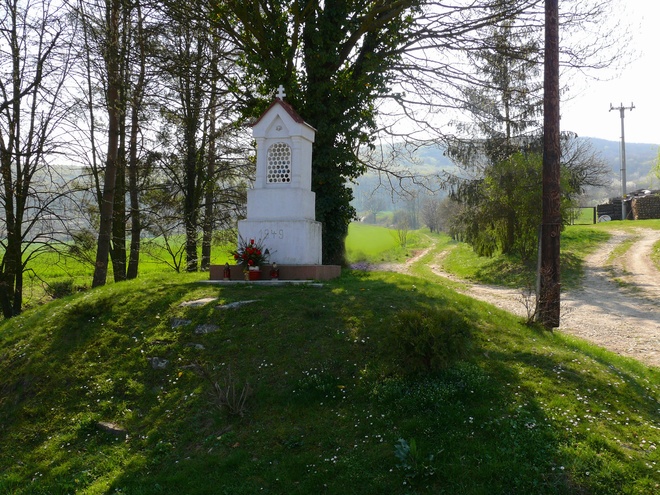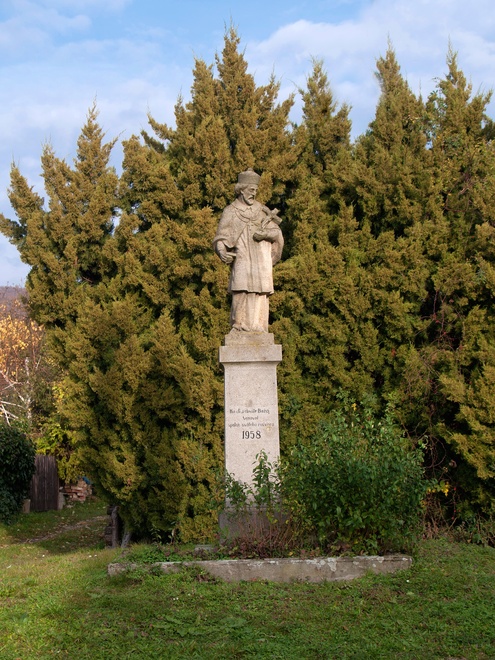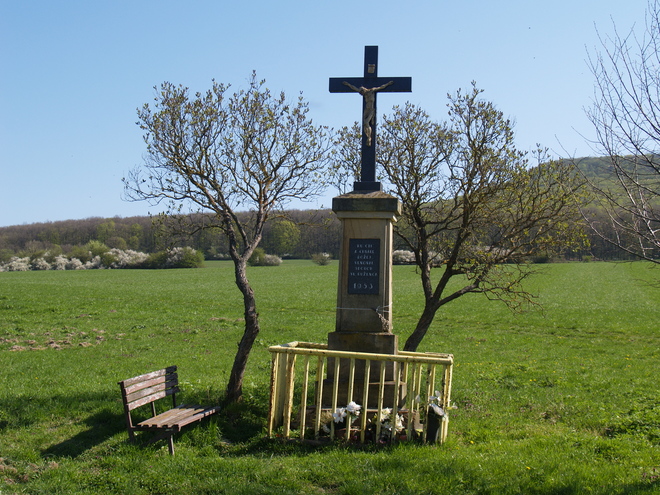Roads
The crossing between red and yellow markings at station No. 2 is situated at the place, where formerly the road from Gýmeš Castle (yellow marking) led to the border of Kostoľany. Here it joined the old road from the Žitava Region along Dúň Hill to the central Nitra Region. Its segment between station No. 2 in the direction of Jedliny is today used by the Ponitrianska magistrála (Nitra arteria; red marking).
We continue from station 1 along the yellow marking (8135), slightly ascending, on a road in south-western direction and arrive at a smaller park, where we turn right. Diagonally we reach an asphalt road, by which we arrive at the crossing of the red (0706) and yellow markings (8135) labelled with the tourist signpost of Kostoľany pod Tribečom, 250 m.a.s.l. There are parking opportunities and a newly built shelter as a resting place.
Time: 10 min. in both directions, length: 0.4 km, easy.
Kostoľany arterial
Already in Prehistoric times a road through the Kostoľany Basin connected the regions of Žitava and Nitra which was to become a basic axis of the later road network. This road is therefore called the Kostoľany arterial. Since the 11th century, obviously in connection with the ownership division of the Kostoľany Basin, two branches of this road developed between Ladice and Kostoľany – one leading on the Nitra side and the other on the Tekov side of the basin.
Beginning with the 13th century, as a result of the construction of Gýmeš Castle, the road on the Nitra side, today’s national road from Neveríce, gradually became the main road to Kostoľany and Oponice. The Tekov branch of the road from Ladice to Kostoľany was used mainly by the administration of the Tekov seat and until the 15th century by the inhabitants of Ladice in connection with their affiliation to the parish of Kostoľany. Following the administrative merging of the Tekov and Nitra parts of Kostoľany in 1873, it ceased to exist in the second half of the 20th century.
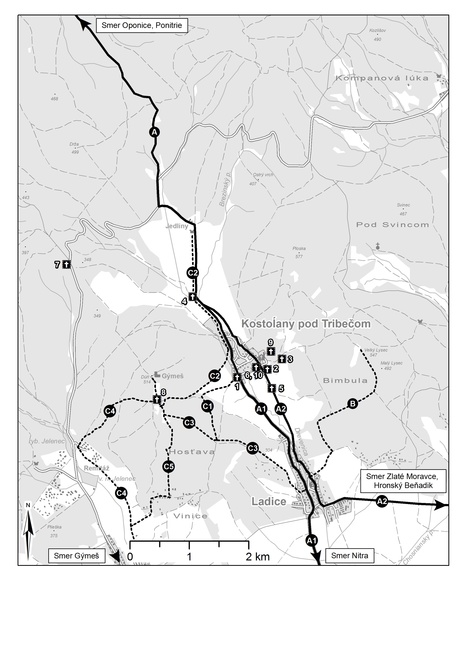
Guardians of the Kostoľany arterial
The importance of the road from the Žitava region to the Nitra region through Kostoľany called for control and guarding. First guardians of this road were most probably the inhabitants of the fortified settlement on Veľký Lysec (station no. 18). The guard settlement from the 9th–10th centuries at the entrance to the basin in Ladice seems to have played a similar role. In the 11th century it merged to the territory of today’s Kostoľany, which was then inhabited by ‘castle people’ as they are mentioned in the Zobor deed from 1113. Part of their duties was the protection of St George’s Church. The tradition of the ‘castle people’ of Kostoľany was continued by the Forgach by the construction of Gýmeš Castle. The function of guardians is witnessed by archival sources still in the 17th century.
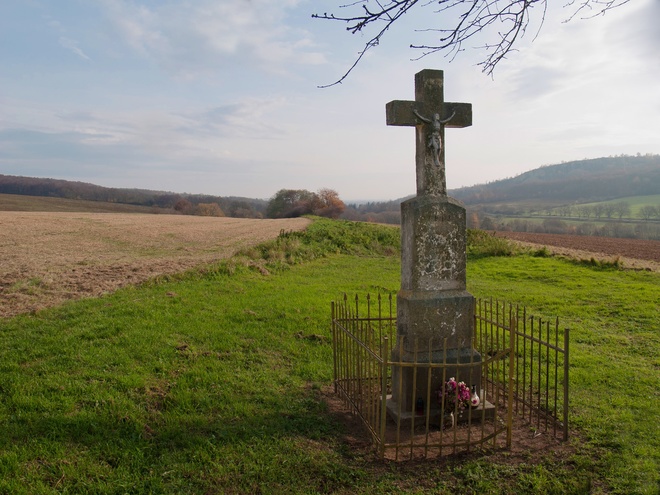
The road to Veľký Lysec and to Gýmeš Castle
In the 13th century the construction of Gýmeš Castle promoted the development of a new road network (station No. 7). At Sedlo pod Studeným hradom (station No. 9) a crossing of the roads leading from the castle to Kostoľany, Jelenec (Gýmeš) and Ladice developed. A road connection between the castle and the municipality of Jelenec through Biely kríž and the vineyard’s area gained importance in the 18th century. In the 19th century then, after the Forgach had left Gýmeš Castle, they were used as forest roads only and in the 20th century they became tourist trains in this part of Tribeč (red, green and yellow markings).
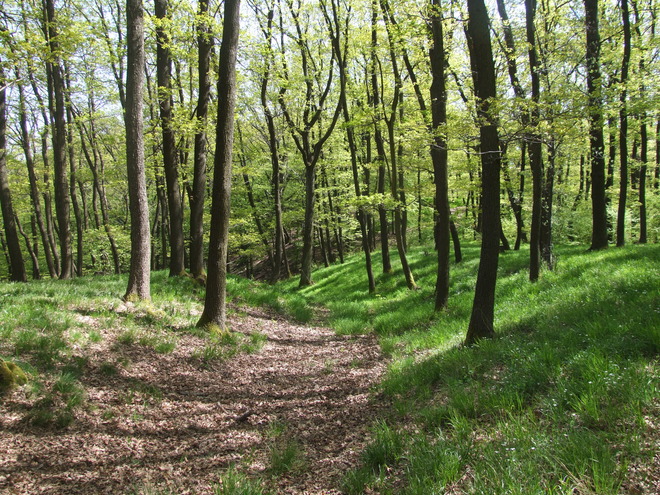
Wayside shrines, statues and crosses
On the territory crossed by the Kostoľany Educational Trail it is possible to meet on the roads and crossings small-scale religious structures that became memorials of happy and tragic events, witnessing the worship of saints and of the Virgin Mary. Their origin is connected with the pre-Christian era. Wayside shrines, wayside statues, and crosses often served as important landmarks. The wayside shrine is a small building with a piece of art referring to the Passion cycle. There are many architectural variants from the earliest type of a stone column to a shrine for light or paintings referring to the Passion cycle to a square building with a niche. 05 The statues of saints are figures with characteristic attributes, cut in stone or wood, mostly painted, standing in a shrine or more shrines with niche on a column, pedestal or pillar. 06 Crosses are probably the oldest representatives of small-scale sacral architecture. Their types may be divided into cemetery crosses, forming the dominant of a cemetery, missionary crosses in the neighbourhood of Churches as a memory of missions, and wayside or pilgrimage crosses as stations for pilgrims. Another type is the guiding cross, a small stone cross made by the blamable as a part of his penalty or as a repentance of his guilt. Among the crosses we may mention the originally wooden and later on stone Latin cross. The Modern period adds forged crosses, cast iron crosses started to replace stone crosses in the 18th century. 03, 07 As far as we can state, the history of small-scale sacral architecture in Kostoľany pod Tribečom reaches back to the second half of the 18th century. It is mainly connected with their expansion in the 19th century. In the 20th century, these monuments were mostly replaced by new ones, mainly by care of the ‘Obecný spolok sv. Ruženca’ (Parish Association of the Holy Rosary).
